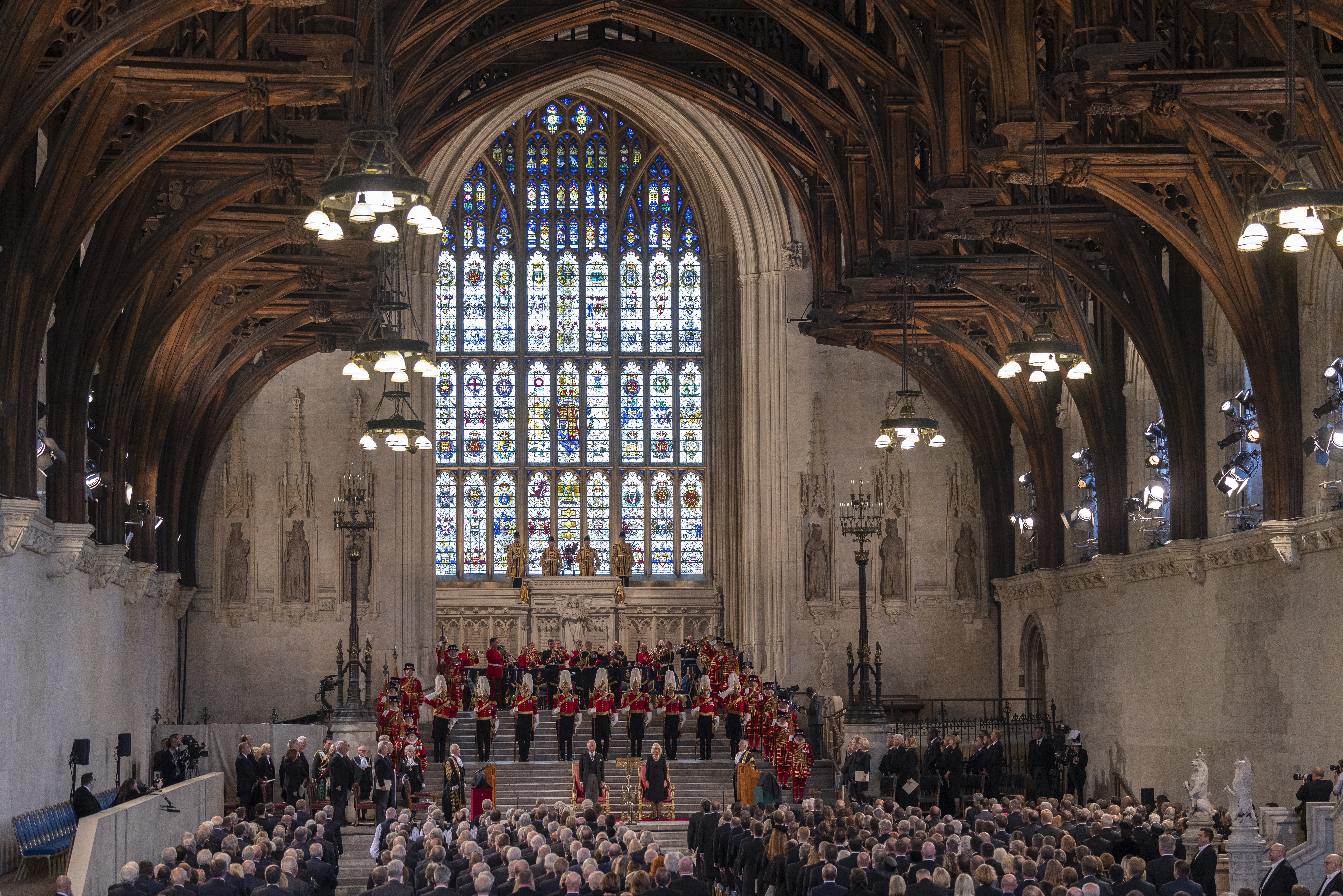Westminster Hall: The colourful history of the 900-year-old building
It has been the location for celebrations and times of mourning.

Your support helps us to tell the story
From reproductive rights to climate change to Big Tech, The Independent is on the ground when the story is developing. Whether it's investigating the financials of Elon Musk's pro-Trump PAC or producing our latest documentary, 'The A Word', which shines a light on the American women fighting for reproductive rights, we know how important it is to parse out the facts from the messaging.
At such a critical moment in US history, we need reporters on the ground. Your donation allows us to keep sending journalists to speak to both sides of the story.
The Independent is trusted by Americans across the entire political spectrum. And unlike many other quality news outlets, we choose not to lock Americans out of our reporting and analysis with paywalls. We believe quality journalism should be available to everyone, paid for by those who can afford it.
Your support makes all the difference.The King described Westminster Hall as a “great hall” which holds “reminders of medieval predecessors of the office to which I have been called” during a speech given to MPs and peers in Parliament.
Charles’s address is the latest speech to take place in the hall, a location which has been used to mark momentous moments in British history.
It dates back more than 900 years and has witnessed the trials of Guy Fawkes and King Charles I, and the lying in state of William Gladstone, Sir Winston Churchill, King George VI and his wife, the Queen Mother.
Westminster Hall was built in 1097 under William II (Rufus), the son of William the Conqueror, and was completed two years later.
According to the UK Parliament website, the hall was created to impress William II’s new subjects with his power and the majesty of his authority.
It holds the title of Europe’s largest unsupported medieval roof and, despite a fire which destroyed the original Palace of Westminster and the dropping of a dozen German bombs in 1941, the hall still stands as a proud reminder of British history.
It measures 240ft (73.2m) long, 68ft (20.7m) wide and 92ft (28m) high.
The roof was originally supported by two rows of pillars but in 1399 Richard II wanted to make the hall more impressive by making it unsupported.
It was a challenge met by carpenter Hugh Herland and architect Henry Yevele by building huge hammer-shaped oak beams and strengthening the walls.
In the 14th century the hall became a centre of London life, housing the law courts and selling a host of legal paraphernalia including wigs, pens and books.
It was also the scene of the trial of Guy Fawkes and his fellow Gunpowder Plot conspirators in 1606, and King Charles I, who was tried for treason and beheaded in the 17th century.
During its use, Westminster Hall has twice escaped destruction, following the fire of 1834, caused by a stove overheating and which razed the rest of the Palace of Westminster to the ground, and during the Second World War when German bombers dropped a dozen bombs on the neighbouring House of Commons chamber in 1941.
It is reported in Brewer’s Politics that Tory MP Colonel Walter Elliot broke down the hall’s oak door after the bombing with an axe, shouting: “Let the pseudo-Gothic go. We must save the Hall!”
The historic roof and the hall were saved although Elliot could simply have opened the side door kept unlocked for emergencies.
Despite the hall being used as the location for several royals and former prime ministers to lie in state, the Queen’s husband, the Duke of Edinburgh, did not follow suit after his death in 2021.
In accordance with his wishes, the duke did not lie in state, however his death also took place during the Covid-19 crisis and at that point such mass gatherings were against the law.
The hall has also been used for celebrations to mark important moments in British history, such as the 50th anniversary of the end of the Second World War and the Queen’s Silver Jubilee in 1977, Golden Jubilee in 2002 and Diamond Jubilee in 2012.
To mark her Diamond Jubilee, a stained glass window was installed in the hall.
On Wednesday, the Queen will return to the hall for one final time.
A ceremonial procession is due to take place, which will see the Queen’s coffin travel from Buckingham Palace to the Palace of Westminster for the lying in state.
Her coffin will be closed and will rest on a raised platform, called a catafalque, in the hall and will be draped in the Royal Standard with the Orb and Sceptre placed on top.
It will be guarded around the clock by a vigil of units from the Sovereign’s Bodyguard, the Household Division, or Yeoman Warders of the Tower of London.